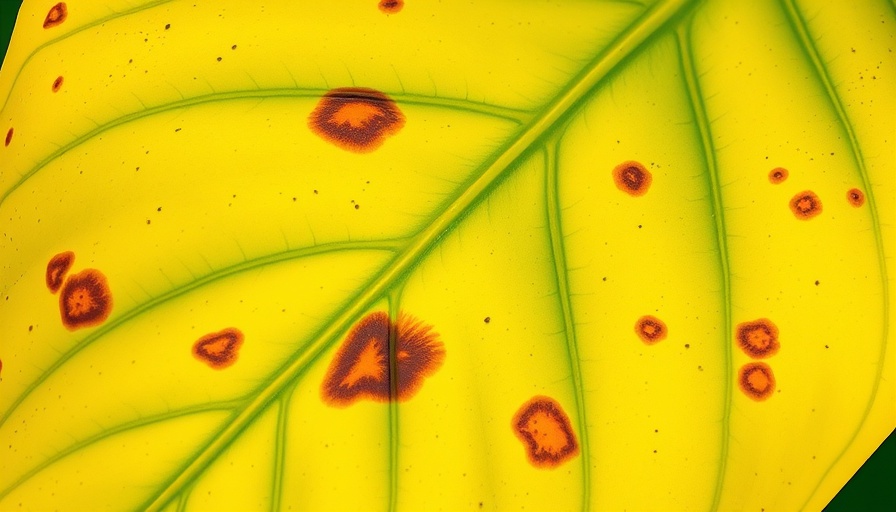
Understanding Monstera Plants: A Brief Overview
Monstera deliciosa, often simply referred to as Monstera, is a tropical plant native to the lush rainforests of Central America. Renowned for its glossy, heart-shaped leaves, this plant offers both beauty and a touch of nature to any home. One of its most unique features is the fenestration, or splits in the leaves, which develop as the plant matures. While these houseplants are generally quite hardy, they thrive best under specific care conditions. Understanding the basics of what a healthy Monstera looks like is essential for new plant parents and seasoned ones alike.
The Sickness Signs: How to Recognize If Your Monstera Is Struggling
If you find yourself asking, "Is my monstera sick?", there are several signs to watch for. According to Megan Brame, a plant expert, yellowing or drooping leaves often signify distress. Over time, this can manifest into browning and crisp edges, indicating potential root or watering issues. Additionally, Gail Pabst from the National Garden Bureau emphasizes the importance of observing your plant regularly; specific patterns in yellowing can reveal underlying problems.
Another indicator is leaf curling, which often suggests that your plant isn't receiving enough moisture. If you're noticing a lack of new leaf growth or fenestrations—a common concern among new Monstera owners—understand that mature plants typically require a healthy balance of light and hydration to flourish.
Common Misconceptions about Monstera Health
One prevalent misconception among plant owners is that yellowing leaves unequivocally point to a sick plant. While this is often correct, Gail Pabst advises examining the positioning of the leaf. A lower leaf turning yellow could simply be a natural aging process. Conversely, if a higher leaf shows this symptom, it might be hinting at something more serious.
Additionally, many gardeners mistakenly expect to see fenestrations on every new leaf right away. Brame explains that fenestrations develop once the Monstera is mature and the environmental conditions are just right. Patience is key in plant care and understanding these growth stages can help alleviate anxiety for concerned owners.
Practical Tips for Keeping Your Monstera Thriving
To ensure your Monstera remains healthy, there are several practices you can follow. First, providing sufficient light is critical. While Monsteras tolerate low light, they thrive best in bright, indirect sunlight. If you notice elongation in your plant’s stems—affectionately known as being “leggy”—it may be time to reposition it to a brighter spot.
Proper watering is equally crucial. Overwatering can lead to root rot, while under-watering can dry out the leaves. As a rule of thumb, allow the top inch of soil to dry out before adding more water. This practice can help you strike the right balance and keep your monstera vibrant.
Future Trends in Houseplant Care
As the popularity of houseplants continues to rise, so do advancements in plant care technologies. Innovations such as smart pots that monitor soil moisture levels and light conditions can assist even the busiest homeowners in maintaining their green companions. Keeping an eye on these trends can provide insights into enhancing the health of your plants while integrating modern convenience into your home.
Conclusion: Embracing the Journey of Plant Parenthood
The journey of caring for a Monstera can be rewarding and fulfilling. By understanding the signs of distress and equipping yourself with knowledge, you can enjoy a thriving, beautiful plant in your home. Whether you are new to the plant parenting journey or a seasoned caretaker, embracing these little signs of life will certainly help you cultivate a greener, healthier living space.
For those interested in diving deeper into plant care and finding innovative ways to manage your home’s greenery, consider exploring workshops in your area or visiting local nurseries that offer expert advice on plant maintenance.
 Add Row
Add Row  Add
Add 




Write A Comment